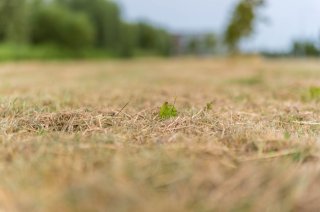
Dossier
Drought
The Dutch climate is changing rapidly, and there is a real chance of increased droughts in the future. The summer of 2018 was one of the dryest in the decades, and 2019 was also far from wet. Wageningen University & Research studied the effect this drought has on agriculture, nature and living circumstances. In this dossier, you will find news, background information and the results of research on drought.
News, research and experts on drought
Drought and crop farming
As a result of climate change and the increasing depletion of natural resources such as water, it is important to develop crops that have an increased resistance to drought. This is the main focus of many knowledge institutes and plant breeding companies. Wageningen University & Research considers it vital to assist our stakeholders by seeking innovative solutions based on GM and non-GM characteristics, that contribute to the global challenges in agriculture. Given the ever-increasing focus on reducing water usage and the predicted rise in dry summers, it is vital to improve these characteristics in our most important crops.
Expert drought and crop farming
- Unfortunately, your cookie settings do not allow videos to be displayed. - check your settings
Drought and nature
Drought severely impacts nature. The water levels and humidity of the soils drop, foliage discolours, and animal populations suffer from lack of food and water. Drought also forces us to stay alert for wildfires: forest fires, heath fires and bush fires. Moreover, there are noticeable changes in 'De Natuurkalender' and insect populations, that increase due to drought (wasps and the oak processionary caterpillar).
Soils may be affected so severely that nothing will grow. Desertification can have numerous causes: water and wind erosion, salination, overgrazing, drought and wildfires. Each cause demands a different countermeasure to turn the tide. Wageningen University & Research collaborates with parties around the globe to find solutions.
Experts drought and nature
Drought and dairy farming
Drought causes the root growth in the grass to stagnate, and the grass to turn yellow. This may cause issues for dairy farmers. Grazing is hampered due to a shortage of grass, and cows may have to be fed supplementary feed as the level of protein in the grass is reduced. Feed prices will increase, and storage issues may develop for manure that is not applied to the soil as the grass requires less manure.
Allow grass to recover
The recovery of grass depends on the depth of its roots, the type of soil, groundwater levels and the degree of dehydration. In general, the recovery capability of grass is extremely high, when left alone.
Tips
1. Dry grass breaks easily, so leave it alone. During persisting dry spells, it may be wise to keep cattle in the barn.
2. Be patient and refrain from fertilising. Especially in heavy clay soils the chance of the fertiliser rinsing out is high.
3. Refrain from mowing to prevent further dehydration. Mow just before the rains to give growth an impulse.
4. Limit fertilisation of the grass for the remainder of the season.
Tailored irrigation
The government allows some farmers to use sprinklers if they use surface water or their own wells, and thus refrain from burdening the water supply. With tailored irrigation, the correct amount of water is provided at the proper time. This may be a solution, especially if drought impairs feed production and grazing. Remote sensing gave this project a new impulse in 2010.
Feed crops
WUR studies the cultivation of drough-resistant feed crops. Sorgum and alfalfa provide interesting alternatives to corn.











